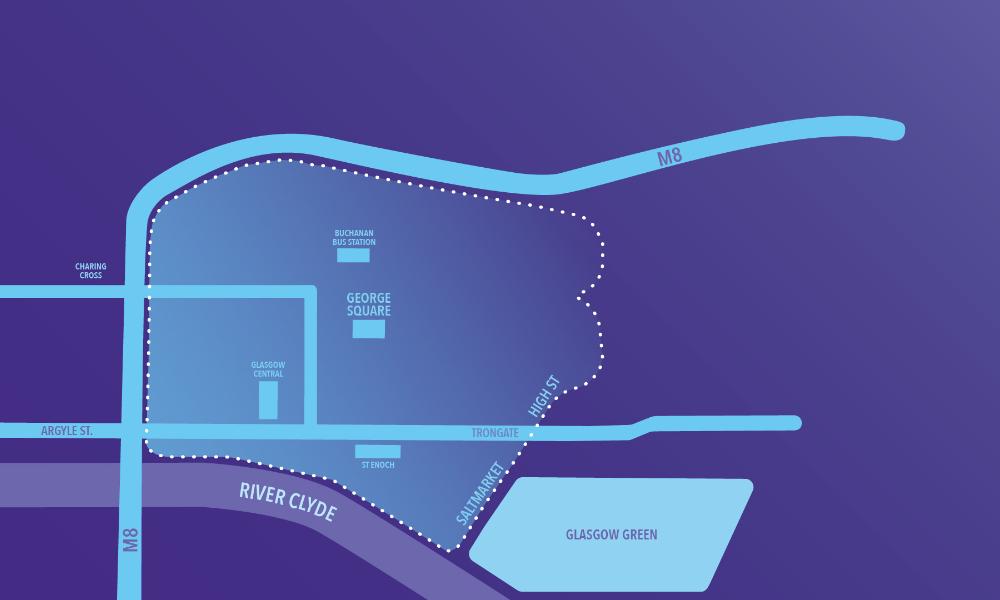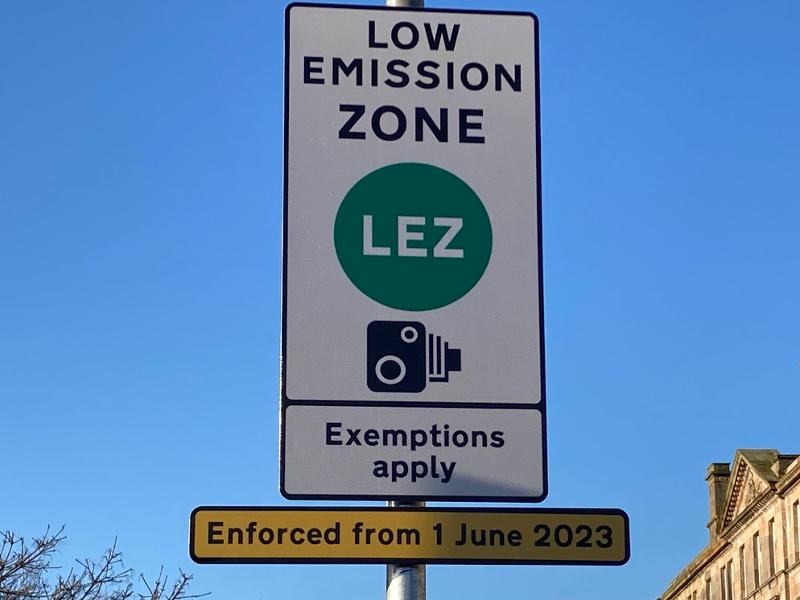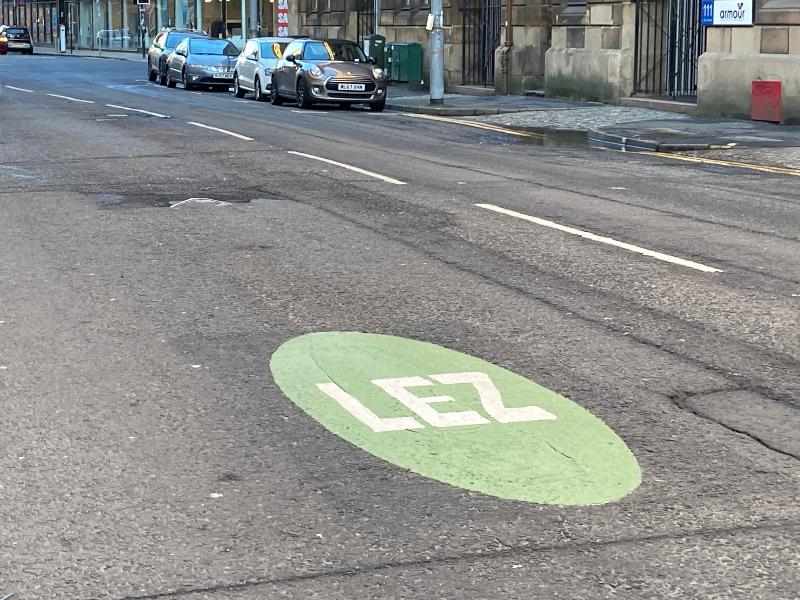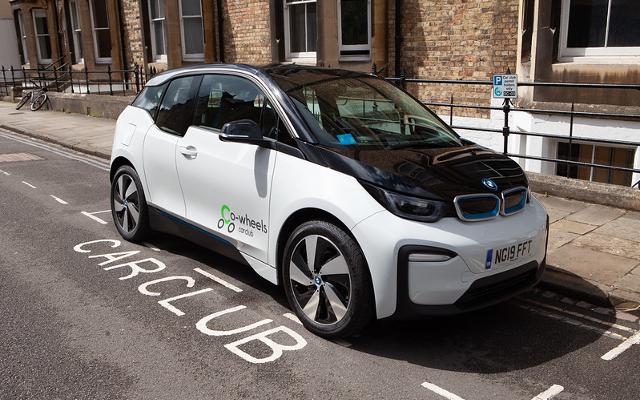- Glasgow City Council
- > More Services
- > Environment
- > Environmental Health
- > Glasgow's Low Emission Zone (LEZ)
- > Glasgow's Low Emission Zone (LEZ) - Key Information
Glasgow's Low Emission Zone (LEZ) - Key Information
Glasgow's Low Emission Zone (LEZ) came into force on 1 June 2023.
All vehicles entering the city centre zone area must meet the less-polluting emission standards or face a penalty charge
There are some exemptions and zone residents have extra time to comply.
Motorcycles and mopeds are not included in the current LEZ schemes and no restrictions will apply.
You can pay/appeal a LEZ Penalty Charge Notice by clicking on this link.
Quick Links
- Check if your vehicle is compliant with LEZ emission standards by using Transport Scotland's vehicle registration checker.
- Blue Badge holders who require exemptions can register their details on Transport Scotland's LEZ exemption system.
- Zone residents who require a grace period until 31 May 2024, can apply by clicking on this link.
- Public hire taxi operators applying for a time-limited (temporary) exemption can do so by clicking on this link.
- In exceptional circumstances, Glasgow's LEZ scheme will allow for time-limited (temporary) exemptions of up to one year. You can find out more and access the application process by clicking on this link.
Why Glasgow needs a Low Emission Zone
Harmful nitrogen dioxide is being recorded in our city centre at levels that do not meet the legal requirements.
As the main source of this pollutant is from road traffic, Glasgow's Low Emission Zone is an essential measure to improve air quality and help protect public health, especially for those most vulnerable.
Glasgow's LEZ can also:
- help accelerate the uptake of less polluting vehicles
- encourage people to move away from private car use
- increase the safety, attractiveness, and amenity of our city centre
How Glasgow's LEZ works
Glasgow's LEZ:
- commenced enforcement on 1 June 2023
- applies to all vehicles entering the zone, unless exempt
- operates continuously, 24 hours a day, all year round
- covers an area of the city centre bounded by the M8 motorway to the north and west, the River Clyde to the south and Saltmarket/High Street to the east
- identifies non-compliant vehicles entering the zone by using Automatic Number Plate Recognition (ANPR) cameras
You can read the full details of Glasgow's LEZ Final Scheme Design by clicking on this link.
Key Dates
Glasgow's LEZ is being phased in to give everyone time to prepare:
- Phase 1 (buses only) was introduced on 31 December 2018
- Phase 2 (all vehicles) came into force on 1 June 2023
- Enforcement for vehicles registered to a residential property within the zone area will start on 1 June 2024 (see section below on Zone Residents for more details)
Zone Boundary
Glasgow's LEZ is approximately one square mile in size.
It covers an area of the city centre bounded by the M8 motorway to the north and west, the River Clyde to the south and Saltmarket/High Street to the east.
The M8 motorway is not included within Glasgow's LEZ.

Click on the links below, for further details about specific roads/streets affected by Glasgow's LEZ:
Emission standards/Vehicle Registration Checker
Petrol/Diesel Vehicles:
Emission standards for LEZs in Scotland have been set in leglislation at national level - these are:
• Euro 4 for petrol vehicles
• Euro 6 for diesel vehicles
• Euro IV for heavy duty petrol vehicles such as buses/coaches and HGVs
• Euro VI for heavy duty diesel vehicles such as buses/coaches and HGVs
These standards were publicly consulted on in 2018 and 2019/20 and confirmed through the Transport (Scotland) Act 2019 and subsequent regulations. They are consistent with similar schemes across the UK and Europe.
For practical purposes, it is generally the case that diesel engine vehicles registered after September 2015, and petrol vehicles registered from 2006 onwards will meet the required LEZ standards. Buses and HGVs from 2013 onwards also generally meet the Euro 6 standard.
Use Transport Scotland's vehicle registration checker to check your vehicle for LEZ compliance.
Exemptions
Motorcycles and mopeds are unaffected by LEZ schemes in Scotland.
Certain vehicle types are also exempt from LEZ emission requirements in Scotland - these are set out below:
1. Vehicles for Disabled Persons:
There are several exemptions which cover vehicles being used for the purposes of disabled persons, as outlined in the following circumstances:
- A vehicle registered with a 'disabled' or 'disabled passenger vehicles' tax class.
- A vehicle receiving a reduction in annual rate of vehicle excise duty because the vehicle is being used by a disabled person in receipt of personal independence payment at the standard rate.
- Blue Badge holders
There are several exemptions which cover vehicles being used for the purposes of disabled persons, as outlined in the following circumstances:
- A vehicle registered with a 'disabled' or 'disabled passenger vehicles' tax class.
- A vehicle receiving a reduction in annual rate of vehicle excise duty because the vehicle is being used by a disabled person in receipt of personal independence payment at the standard rate.
- A vehicle carrying a Blue Badge holder, including:
- A vehicle being driven by any person who is in receipt of a Blue Badge.
- A passenger in the vehicle who has been issued with a Blue Badge.
- A vehicle being driven with a Blue Badge which has been issued to an organisation.
Blue Badge holders who require exemptions can register their details on Transport Scotland's LEZ exemption system.
2. Emergency Vehicles:
The vehicle is being driven by any person who is:
- undertaking their duty as a constable
- providing a response to an emergency at the request of the Scottish Ambulance Service Board
- exercising the functions of the Scottish Ambulance Service Board, the Scottish Fire and Rescue Service, Her Majesty's Coastguard or the National Crime Agency
3. Naval, Military or Air Force Vehicles:
- vehicles being used for naval, military or air force purposes
4. Historic Vehicles:
Vehicles of 'historical interest' means a vehicle which is considered to be of historical interest to the UK, and which -
- was manufactured, or registered, for the first time at least 30 years previously,
- is of a type no longer in production, and
- has been historically preserved or maintained in its original state and has not undergone substantial changes in the technical characteristics of its main components.
5. Showman's Vehicles:
Vehicles described as either "showman's goods vehicle" or "showman's vehicle" according to section 62(1) of the Vehicle Excise and Registration Act 1994.
Note: these are highly specialised vehicles used for the purposes of travelling showmen, where the vehicle is used during the performance, used for the purpose of providing the performance or used for carrying performance equipment.
Time-Limited (Temporary) Exemptions
Glasgow's LEZ scheme allows for applications for a time-limited (temporary) exemption under circumstances where entry of a non-compliant vehicle is required for a specific, defined purpose not considered in legislation or regulations.
Please note that private vehicles will not be considered for time-limited exemptions.
Applications will be determined on their individual merits. Examples of this may be but are not limited to:
- abnormal loads or machinery transport
- historic vehicles or vehicles of particular speciality not covered by other exemptions and used for a specific purpose
- any other non-compliant vehicle use deemed appropriate on application to the council
Applications for time-limited exemptions will not normally be considered for the routine transport of people or goods or for routine commercial operations. However, the council may apply a time-limited exemption, by reference to the vehicle's use, upon consideration of an application.
It is expected that any exemptions will only be granted in exceptional circumstances and where the organisation applying can clearly demonstrate that timely efforts are being made to comply with LEZ requirements.
Time-limited exemptions can be granted for up to a year and may be subject to conditions or restrictions as deemed appropriate by the council.
The application form is available by clicking on this link.
Temporary Suspension of the LEZ
The council can temporarily suspend the zone (in full or in part) for events of local/national significance.
We will determine any need to suspend Glasgow's LEZ for events on a case-by-case in consultation with the Scottish Government.
We may also suspend Glasgow's LEZ in emergency situations such as if an incident on a nearby road requires traffic to be temporarily diverted through the zone area.
Any emergency suspension will be determined by the council.
Zone Residents
A grace period for zone residents' means that vehicles registered to a residential property within the zone area have until 1 June 2024 to meet LEZ requirements.
The grace period is not applied automatically - residents who require the benefit of the grace period should click on this link for more information. A letter was sent out to residents in May 2023 to highlight what action is required:
![]() LEZ residents letter - May 2023 [146kb]
LEZ residents letter - May 2023 [146kb]
Glasgow's LEZ covers an area of the city centre bounded by the M8 motorway to the north and west, the River Clyde to the south and Saltmarket/High Street to the east:

A full list of streets/roads eligible for the residents' grace period can be viewed by clicking on this link.
Operation and Enforcement
As emissions at all times contribute towards the levels of harmful nitrogen dioxide in our city centre, Glasgow's LEZ is in operation continuously.
Automatic Number Plate Recognition (ANPR) cameras linked to a national vehicle licencing database will monitor vehicles driving into Glasgow's Low Emission Zone.
When a non-compliant vehicle is detected in the zone, a Penalty Charge Notice (PCN) will be issued to the registered keeper of the vehicle.
Statutory roadside signage was erected at all entry points into the LEZ at the end of 2022 - with supplementary on-road markings also applied at suitable locations.
Transport Scotland installed signage on the M8 so that those exiting the motorway for the city centre are aware of the zone area.
LEZ signage:

LEZ roadmarkings:

Penalties
You cannot pay to enter a LEZ.
If a non-compliant vehicle is detected in Glasgow's LEZ, a Penalty Charge Notice (PCN) will be issued to the registered keeper of that vehicle.
A maximum of one PCN will be issued to the vehicle's registered keeper for breaching LEZ rules in any one day.
Set at national level by the Scottish Government for consistency across cities, the initial penalty charge for all non-compliant vehicles entering a LEZ in Scotland is £60.
A scheme surcharge means that the penalty charge amount will double with each subsequent breach of the rules by the same vehicle detected in the same LEZ.
Surcharging will only apply however after the first, or most recent PCN can be expected to have been received by the vehicle's registered keeper.
Penalty charge rates are capped at £480 for cars and light goods vehicles, and £960 for buses and HGVs. Any further breaches of LEZ rules by the same vehicle detected in the same LEZ once this cap is reached will result in future PCNs issued at the capped penalty charge rate.
Where there are no further breaches of the rules detected within the 90 days following a previous violation, the penalty rate will be reset to the base tier charge of £60.
All PCNs will be reduced by 50% if paid within 14 days.
All revenue (above that incurred in running the LEZ scheme itself) can only be used for activities that help reduce air pollution and/or contribute toward achieving our climate change targets.
You can pay/appeal a LEZ Penalty Charge Notice by clicking on this link.
Penalty Charges:
| Vehicle: | Vehicle Category: | Initial Penalty Charge: | Subsequent Penalty Charges: | |||
| 1 | 2 | 3 | 4 | 5 | ||
| Light passenger vehicles (cars) | M1 | £60 | £120 | £240 | £480 | £480 |
| Minibus | M2 | £60 | £120 | £240 | £480 | £960 |
| Bus and coach | M3 | £60 | £120 | £240 | £480 | £960 |
| Light Goods Vehicle (LVCs) | N1 | £60 | £120 | £240 | £480 | £480 |
| Heavy Goods Vehicles (HGVs) | N2 | £60 | £120 | £240 | £480 | £960 |
| N3 | £60 | £120 | £240 | £480 | £960 | |
| Special Purpose Vehicle (SPV) | Type dependent | £60 | £120 | £240 | £480 | £480 |
Funding Support
LEZ Retrofit Fund:
The LEZ Retrofit Fund re-opened in April 2024 to new applications.
The Fund provides eligible microbusinesses and sole traders that operate within a Scottish LEZ with financial support to retrofit their existing non-compliant vehicles with Clean Vehicle Retrofit Accreditation Scheme (CVRAS) approved solutions that meet the minimum standards of LEZs.
Subject to eligibility, grants are available to cover up to 70% of the cost of a retrofit solution, subject to the following terms and conditions:
- Up to £5,000 per light commercial vehicle and wheelchair accessible taxi installing retrofit exhaust after-treatment systems.
- Up to £10,000 per wheelchair accessible taxi installing re-powering technology.
- Up to £16,000 per heavy goods vehicle or refuse collection vehicle.
To check eligibility and apply, visit https://energysavingtrust.org.uk/grants-and-loans/low-emission-zone-retrofit-fund/.
Prior to applying, a valid quote for a CVRAS approved solution suitable for the vehicle must be obtained. A list of solutions and their installers at https://energysavingtrust.org.uk/service/clean-vehicle-retrofit-accreditation-scheme/ .
LEZ Support Fund:
In the 23/24 financial year, the Scottish Government made £5 million available through the LEZ Support Fund.
The Fund offered cash incentives and Travel Better credits, if non-compliant vehicles were removed from Scotland's roads.
Administered by Energy Saving Trust, the programme is means-tested and offers help to those most affected by the introduction of LEZs. It provides people and micro-businesses with financial support to travel more sustainably and meet the established air quality standards.
The Low Emission Zone Support Fund and Travel Better Fund closed to new applications in February 2024 for the 23/24 financial year. Previously submitted applications will continue to be processed and funding offered on a first-come, first-served basis, subject to availability. You can visit the Energy Saving Trust website for more information.
Other Funding Scottish Government Funding:
Whilst the loans detailed below are currently closed to new applications, you can register your interest in being contacted in the future should the loans re-open:
Low Carbon Transport Business Loan
Active/Sustainable Travel Options
Active Travel
Active travel is a fantastic way to avoid driving into Glasgow's LEZ and is beneficial to your health and fitness. If you don't have far to travel, you could consider walking or cycling to your destination.
If your journey is longer, why not walk or cycle to the bus stop, railway station or other form of public transport?
Don't have access to a cycle? Why not consider Glasgow's hugely popular cycle hire scheme powered by nextbike.
Other useful resources include:
- Transport Scotland's Active Travel site
- Paths for All's Health Walks
- Living Street's Family Walk to School Kit
- Cycling Scotland's Essential Cycling Skills guide
- Sustrans' map of the National Cycle Network
Public Transport
Glasgow has a comprehensive public transport system which can be used as an alternative to the car.
Find out more from SPT, ScotRail and Traveline Scotland.
Car Sharing
As a Co-wheels member, you can have access to cars in Glasgow, as well as hundreds more right across the UK. Cars are available 24 hours a day, seven days a week and can be booked by the hour, day or as long as you want.
The cars are conveniently located in reserved on-street parking bays across Glasgow.
To support the operation of Glasgow's LEZ, funding from Transport Scotland has ensured that all Co-wheels vehicles available for hire in the city centre LEZ zone are now fully electric.

FREE Eco Stars Scheme - Helping Businesses Reduce Emissions
ECO Stars is the FREE recognition scheme that aims to help fleet operators improve efficiency, reduce fuel consumption and emissions whilst achieving cost savings.
The initiative is operated on behalf of the council by TRL and is available for fleets of any size.
Membership has shown in numerous case studies to have had a dramatic improvement in fuel efficiency which saves money and reduces environmental impact.
Case Studies:
Read the case studies below to see how Eco Stars can help your business or organisation:
- Community Transport Champion NATA is an Air Quality Eco Star
- McLays Foods Embraces Eco Stars Scheme to Reduce Vehicle Emissions
Improving Glasgow's Air Quality
Glasgow continues to have good air quality, with the majority of our city meeting all air quality targets.
Whilst the LEZ is an important tool to help us reduce harmful vehicle emissions in our city centre, there are many other initiatives and projects ongoing across the city to improve air quality and protect public health.
A report to our Net Zero Committee on 8 November 2022, highlighted a range of measures currently in place such as publicity and enforcement campaigns to discourage vehicle idling, vehicle emissions testing and the first phase of the LEZ which has seen an increase in the number of buses travelling through the city centre that meet the less polluting emission standards.
Other initiatives such as electric vehicle charge points, car clubs and a cycle hire scheme also help to promote sustainable and low emission transport options.
Similarly, Glasgow's Transport Strategy strives to improve air quality through sustainable transport investment and decision-making, whilst also supporting the delivery of a Clyde Metro following its recent emergence as a draft recommendation from the Scottish Government's second Strategic Transport Projects Review.
Air quality improvement is also embedded within policies such as our Climate Plan, Active Travel Strategy and City Centre Transport Plan, all of which encourage walking, wheeling and cycling and more sustainable forms of travel for everyday journeys.





